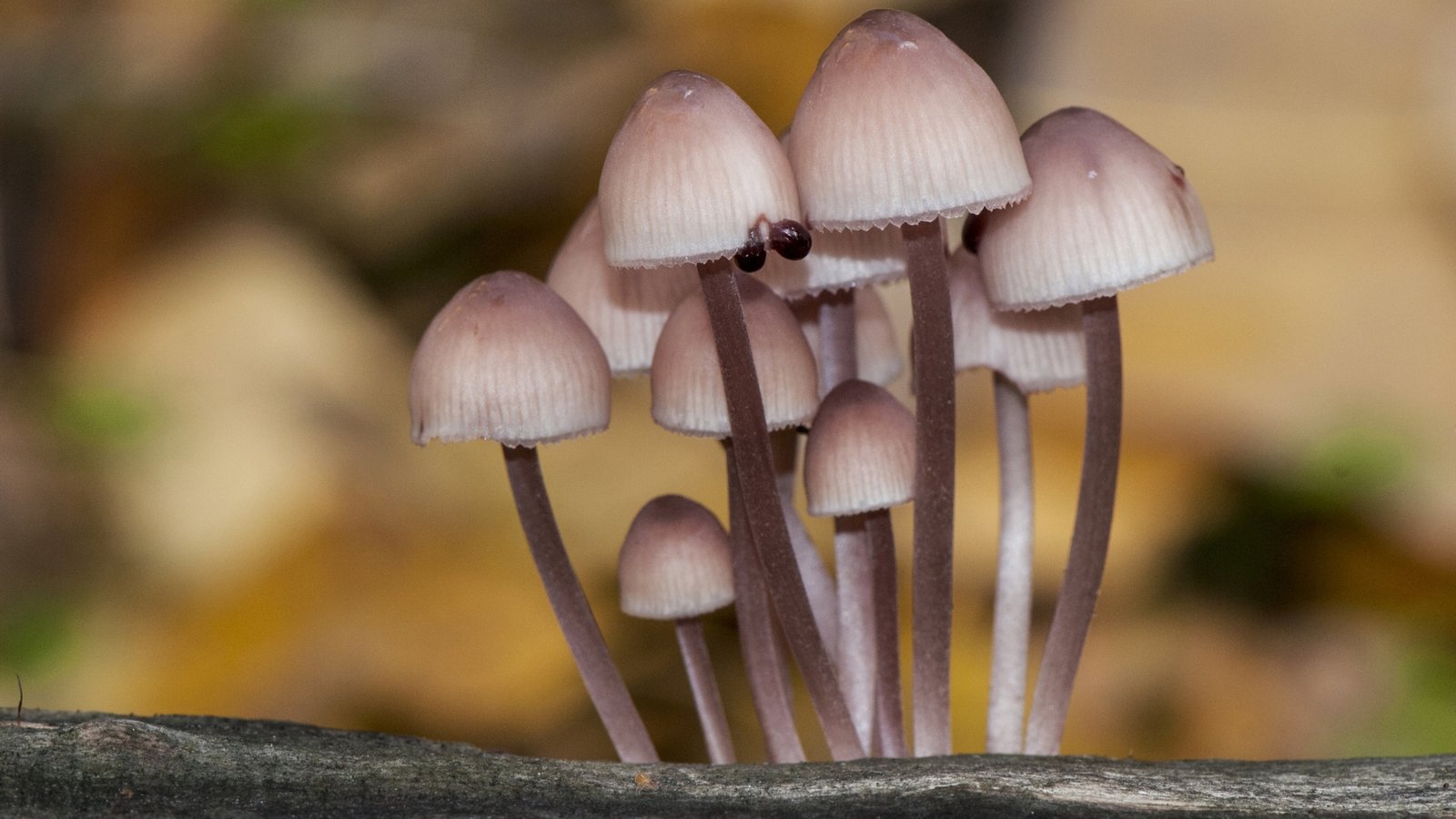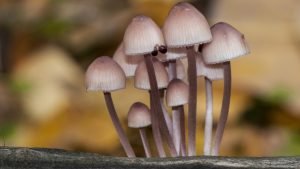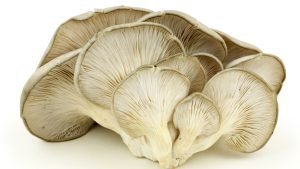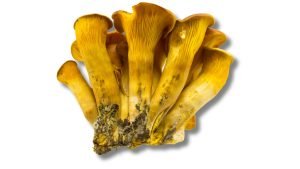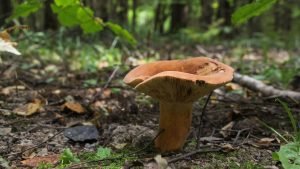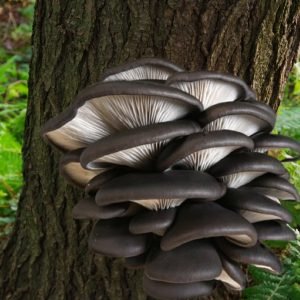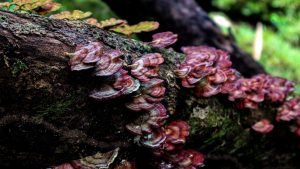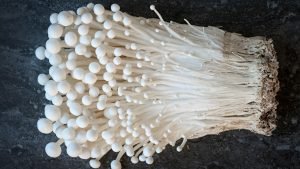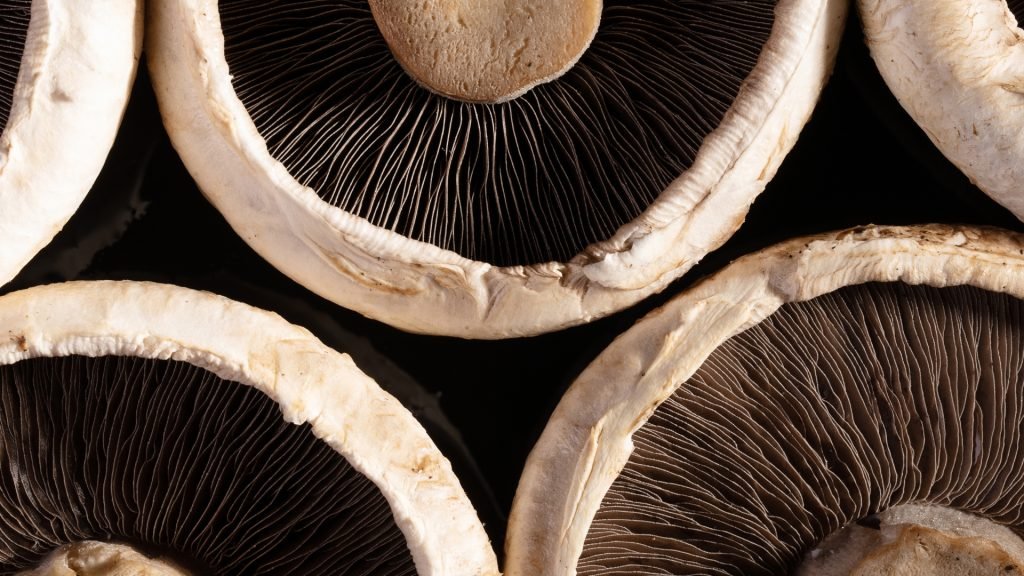Greetings, fungal aficionados and curious minds! Today, we delve into the enigmatic world of Mycena Haematopus, also known as the Bleeding Fairy Helmet, a mushroom that’s as scientifically fascinating as it is visually striking.
SCIENTIFIC NAME:
(Mycena Haematopus)
COMMON NAME(S):
Bleeding Fairy Helmet | Burgundy-Drop Bonnet | Bloodfoot Mushroom
I-NAME:
BFH
Founding Mycologist/Discovered By:
-Unknown-
If you have information, please help us enrich our database!
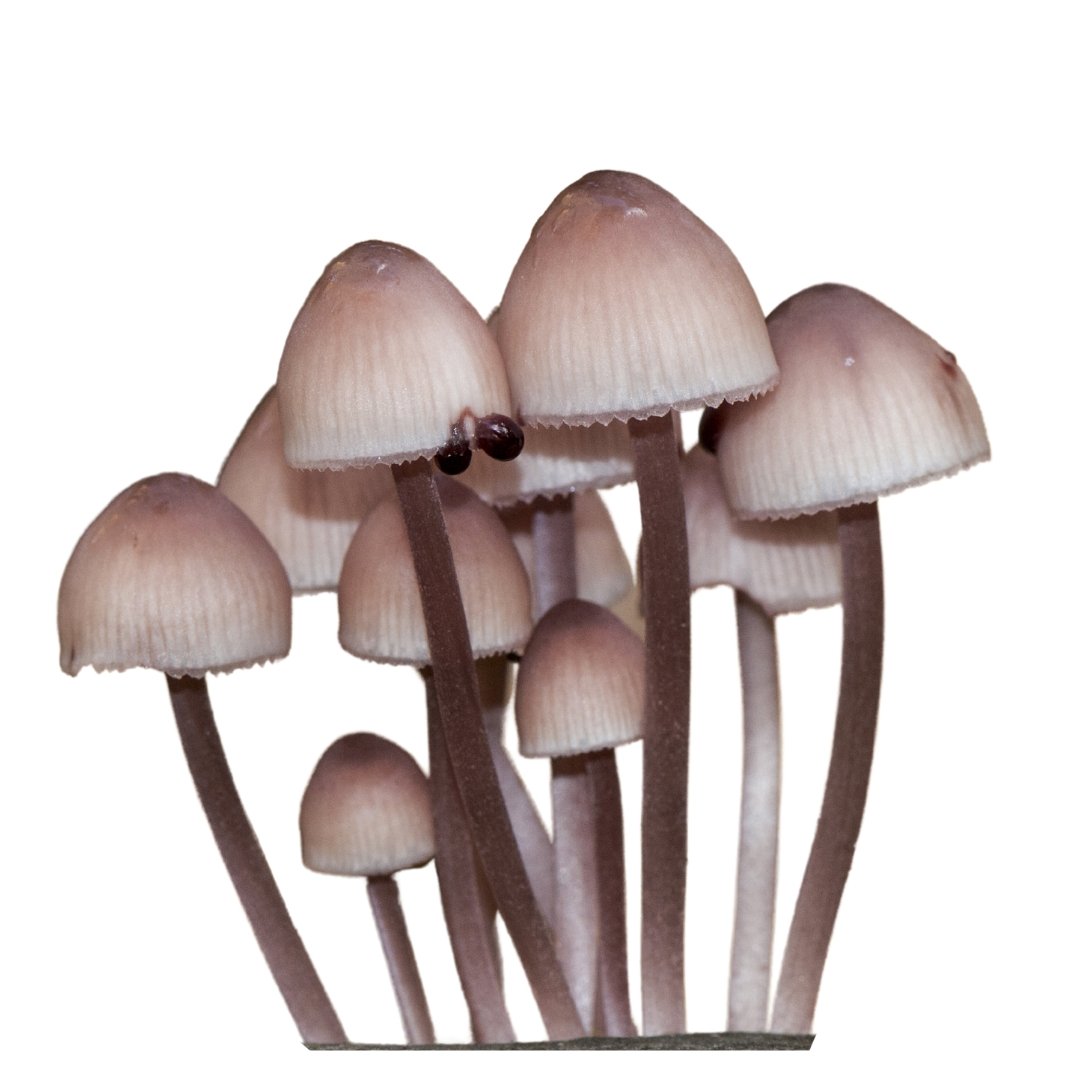
RECOMMENDED TEMPERATURES
Colonizing Temps:50° – 60°F | Fruiting Temps:55° – 65°F |
SPORE COLOR:
WHITE
In this detailed exploration, we uncover the allure of the Bleeding Fairy Helmet, a mushroom that not only enchants with its mysterious ‘bleeding‘ but also plays a vital role in forest ecosystems.
DESCRIPTION:
Mycena Haematopus is distinguished by its small, conical to bell-shaped caps, varying in color from deep red to purple. The stems are slender and emit a characteristic red fluid when damaged, which has earned it the name “Bleeding Fairy Helmet“. The gills of this species are broadly attached to the stem. Its entire form exudes a fragile, otherworldly charm, making it a fascinating subject for mycologists and nature photographers alike.
INTENDED USES:


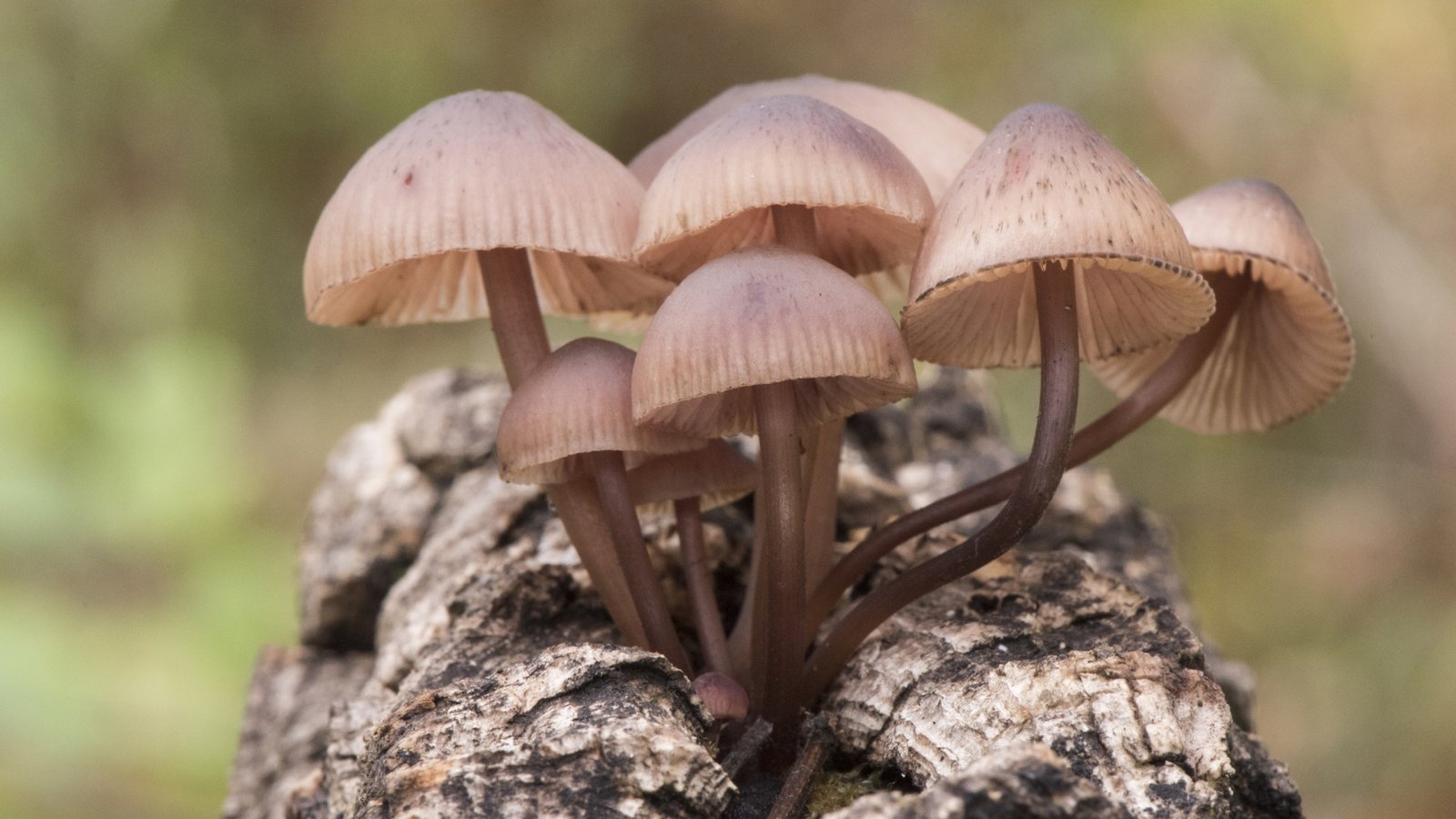
HABITAT AND DISTRIBUTION:
It thrives in deciduous and mixed forests, particularly favoring decaying wood and leaf litter. This species has a broad geographical spread, found across North America and Europe.
ECOLOGICAL ROLE:
Mycena Haematopus plays a significant role as a saprotroph in forest ecosystems. By decomposing organic matter, it contributes to nutrient recycling and soil health. This process is vital for forest regeneration and sustainability. Its presence indicates a healthy, balanced woodland ecosystem, reflecting its integral role in maintaining ecological equilibrium
GROWTH AND CULTIVATION:
Cultivating Mycena Haematopus presents a significant challenge due to its specific substrate requirements and environmental conditions. It is a species that demands a deep understanding of mycological cultivation, often reserved for experienced cultivators. Successful growth requires meticulous attention to humidity, temperature, and substrate composition, making it a rewarding yet demanding endeavor for those dedicated to mycology.
No posts found!
HISTORICAL & CULTURAL INFO:
The Bleeding Fairy Helmet has long been a source of fascination in folklore and mycology. Its striking appearance and unique ‘bleeding’ trait have inspired numerous myths and artistic representations. In folklore, it is often associated with mystical and magical forests, a testament to its captivating nature. In the art world, it has been depicted in various forms, capturing the imagination of artists and nature lovers alike.
GENETIC LINEAGE/HISTORY:
Belonging to the Mycena genus, this species stands out due to its distinctive bleeding feature, which has been a subject of intrigue in the mycological community. Ongoing research into its genetic makeup aims to uncover the secrets behind its unique traits and contribute to a broader understanding of fungal biodiversity.
No posts found!
CHEMICAL COMPOSITION:
The red exudate of Mycena Haematopus is of particular scientific interest. Its composition and potential applications in various fields, including mycology and natural dye production, are areas of ongoing investigation. Understanding its chemical properties could lead to discoveries in natural pigment extraction and utilization.
MEDICAL PROPERTIES (if applicable):
While there are no known medicinal properties of Mycena Haematopus, its unique chemical composition warrants further study. Its potential medicinal applications remain an open field for research, with possibilities for discovering new compounds beneficial to human health.
CULINARY USES (NOT applicable):
Mycena Haematopus is not known for its culinary value. However, its striking appearance and unique characteristics make it a fascinating subject for educational purposes and ecological studies.

CAUTIONS & WARNINGS:
It’s important to note that Mycena Haematopus is not edible and should be handled with care. Its identification requires precise knowledge, as it can be easily mistaken for other species. Always consult a professional mycologist or reliable field guide when dealing with wild mushrooms.
FINAL CONSIDERATIONS:
In summary, the Bleeding Fairy Helmet is a mushroom that not only captivates with its beauty but also plays a crucial role in our understanding of forest ecosystems. Its unique traits make it a valuable subject for ecological and genetic research. We invite you to explore the 🍄 Marketplace for more on this fascinating species, where a world of mycological wonders awaits.
Don’t forget to check out the 🍄 Mushroom Network’s Marketplace to see what’s available. But hurry, our shelves are constantly evolving, and you wouldn’t want to miss out on this wonderful mushroom. Join our growing network of Patrons, Genetics, and Mycologist Vendors only on the 🍄 Mushroom Network!
No posts found!
No posts found!
FAQs:
Mycena Haematopus is not generally considered edible due to its small size and unpalatable taste. While not toxic, it’s not sought after for culinary use.
The “bleeding” feature, where the mushroom exudes a red fluid, is thought to play a role in spore dispersal or defense against microorganisms and insects.
Mycena Haematopus typically grows on decaying wood in forests. For cultivation, a humid, shaded environment and a substrate rich in lignin (like wood chips) would be ideal.
The red exudate of Mycena Haematopus has been explored for its potential as a natural dye, producing a range of pink and red hues on various fibers.
Mycena Haematopus is distinguished by its ability to “bleed” a red fluid and its preference for growing on wood. Its caps are also characterized by a striate margin, and the gills often have a reddish-brown coloration.
MUSHY CLOSING:
Thank you for joining us on this exploration of Mycena Haematopus. As we part ways, remember the words of famed mycologist John Cage: “I have come to the conclusion that much can be learned about music by devoting oneself to the mushroom.” May your mycological adventures be as enriching and enlightening as the notes of a symphony.
Related Articles:
Bleeding Fairy Helmet (Mycena Haematopus)
Greetings, fungal aficionados and curious minds! Today, we delve into the enigmatic world of Mycena...
Read More...Other Mushroom Species To Research:
White Oyster (Pleurotus Ostreatus)
Welcome, fungi enthusiasts and culinary adventurers, to the world of the White Oyster mushroom! As...
Read More...Jack-O’-Lantern Mushroom (Omphalotus Olearius)
SCIENTIFIC NAME: (Omphalotus Olearius) COMMON NAME(S): Jack-O’-Lantern I-NAME: JOL SPORE COLOR: PALE-YELLOW Deep within the...
Read More...Oak Milkcap (Lactarius Quietus)
Welcome, mycology enthusiasts and nature lovers! Today, we’re journeying into the quiet corners of oak...
Read More...Black Pearl Oyster (Pleurotus Ostreatus)
Scientific Name: Pleurotus Ostreatus COMMON NAME(S): Black Pearl Oyster | King Blue Oyster | Midnight...
Read More...Other Recommended Reads:
Exploring the Medicinal Properties of Red Reishi
Our expedition today navigates the therapeutic realms of the Red Reishi, the “Mushroom of Immortality.”...
Read More...Nature’s Vegetarian Chicken: The Science Behind the Texture and Flavor
Strolling through the forest, it’s impossible to miss the flamboyant Chicken of the Woods mushroom,...
Read More...The Scholarly Overview of Micro-dosing Psilocybin Capsules: A Responsible and Educational Approach
About This Article: 🍄 Dive deep into the educational realm of micro-dosing psilocybin capsules with...
Read More...Enoki (Flammulina Velutipes)
Welcome to the intriguing world of the Enoki mushroom, a culinary delight and a scientific...
Read More...Whoa there, Spore Sport! 🍄 Looks like you’re not logged in yet. Don’t you know what you’re missing? MYCO-CREDITS! Imagine all the fungal fun you could have. It’s like finding a Morel in May and not picking it. Tragic, right? Log In or Become a Myco-Patron and start racking up those credits. It’s more rewarding than finding a mushroom in your backyard! 🌟🏡

